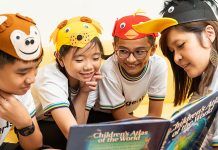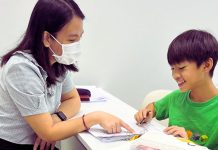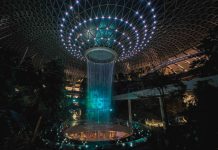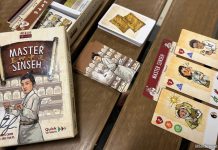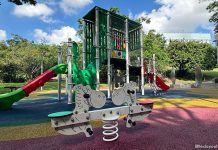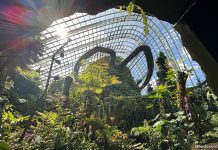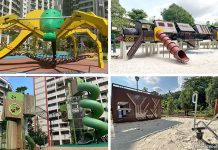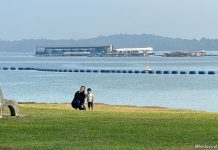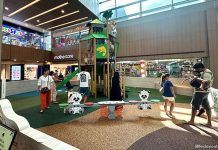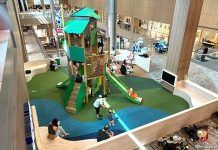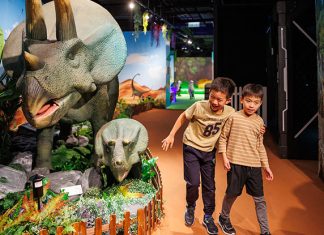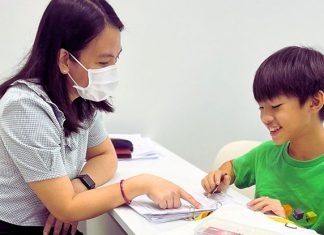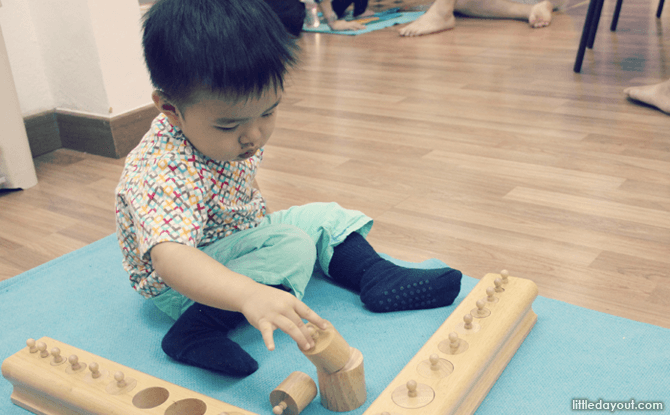
Play is the work of a child, according to Dr Maria Montessori, the founder of the education methodology of the same name.
Lots of meaningful play – that’s pretty much all in a day’s work for our little two-year-old, when we joined Brighton Montessori’s trial class over the weekend.
Mainly, we enjoyed the spacious classrooms of the preschool at Frankel Avenue, the encouraging atmosphere of learning, and the unhurried pace of things.
What is the Montessori Method?
Before the age of six, a child has what Dr Montessori calls “the absorbent mind”, where he has the tremendous ability to learn from the world around him.
The Montessori method allows the child to direct his own learning, and the ability to choose the materials he wants to work on for the day.
“The main philosophy of the Montessori approach is not to force fit children into a mould but to design the environment around the child to enable them to learn and grow at their own pace,” said Sharon Alcantra, Principal of Brighton Montessori at Frankel Avenue.
Warm Welcome
When we reached the school, the teachers came to the door to greet us, and we got our temperatures taken and our hands suitably sanitised.
In the classroom, all the furniture is child-sized – tables, chairs, and open shelves lined with Montessori materials.
Other parents and their children who arrived had already started engaging with some of the activities.
Our two-year-old tot leapt into action and decided quite quickly that he liked the tongs exercise, and transferred pom-poms from one bowl to another. This Montessori activity trains hand-eye coordination and finger strength.
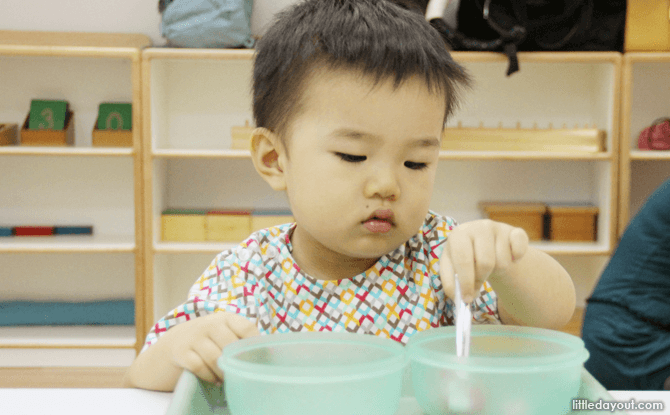
He ditched the tongs and started using his hands as it was more efficient, but the teachers allowed him the leeway to do things at his own pace.
This was all before the programme even started. The teachers encouraged the kids to freely explore the materials laid out on the tables, the floor and the shelves.
When it was time for the class to begin, everyone gathered in a circle, as the teacher warmed the kids up with a gentle welcome song.
Storytelling
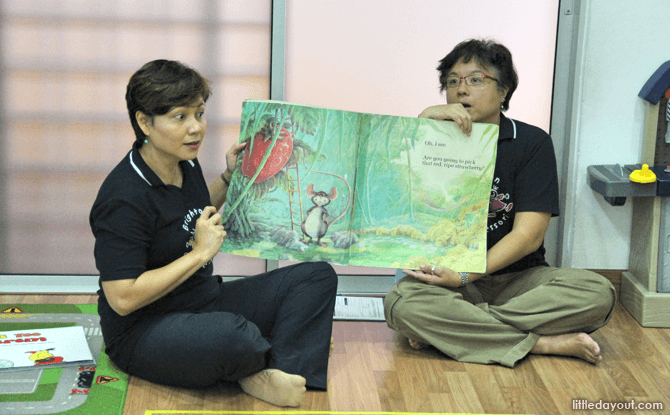
Next, it was storytelling time, with lots of animated gestures and a dynamic reading voice.
The teacher reminded parents to read as expressively as possible to the kids at home, to encourage their love of reading.
Montessori Materials
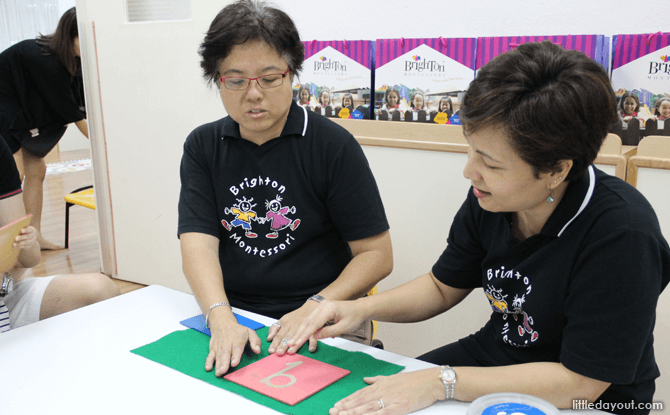
Now, it was time for the main part of the day’s programme – the Montessori activities.
The teachers demonstrated and explained some of the Montessori materials.
The Montessori materials are not the usual toys we see in the shops – they are mostly wood-crafted and each serve a specific purpose.
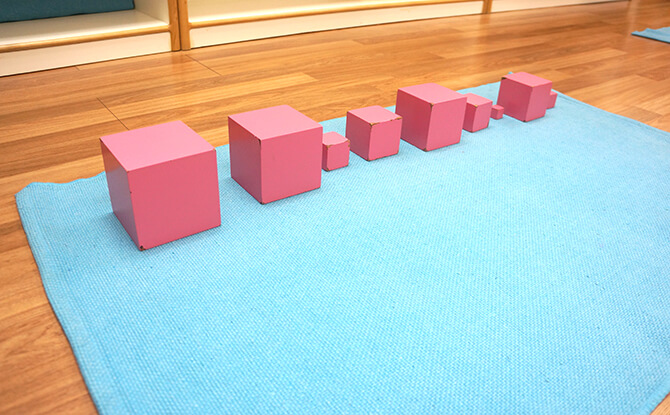
The Pink Tower is a fundamental Montessori material that guides a child to learn visual-motor skills, and further, to grade objects from large to small.
Many of the Montessori materials are “self-correcting” in nature; the child will instinctively try to find a solution to make things “fit”.
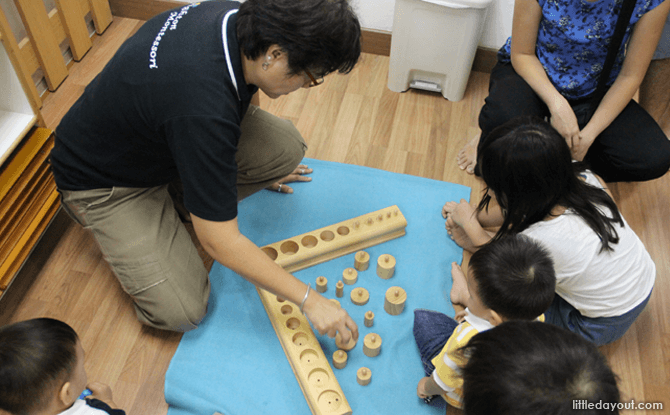
The knobbed cylinders, for example, have blocks of different height and diameter which fit in a specific hole each. The child is encouraged to find the solution by himself until the puzzle fits.
The alphabet tubs are another great preschool idea for starting phonics. Each tub teaches starting letter sounds. For instance, the J tub contains objects like jeep, jellyfish, jacket and so on, which the child can engage with.
A clear strength of the Montessori method is the highly sensorial and hands-on opportunities for learning.
The Montessori Classroom
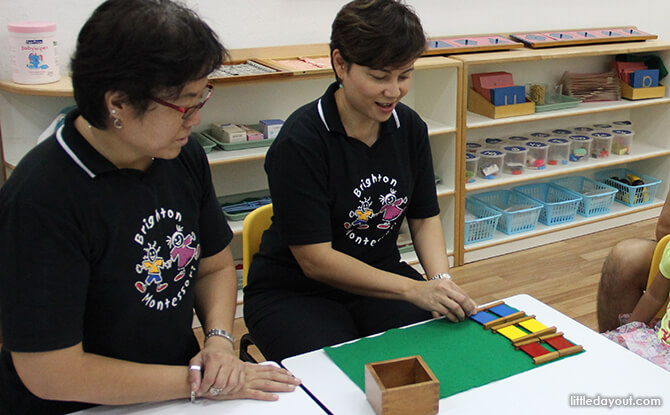
The layout of the classroom is also important for early childhood education, Montessori or not. Child-centric classroom layouts encourage exploration and independence in kids.
In the case of this preschool, the ease of accessibility to materials for kids follows the principles of the Montessori method.
The “prepared environment” – to use a Montessori term – offers open shelves with quality materials (mostly crafted with wood) neatly displayed espouse the values of order, beauty and accessibility.
In this way, the child is able to direct his own learning and learn independence.
Montessori in the Education Ecosystem
Some parents are concerned that the independent, self-directed approach of learning may not prepare their child for the rigours of primary school.
For instance, the pure Montessori approach does not involve much homework.
Brighton Montessori blends Montessori methods with the more usual materials like worksheets and ‘bite-sized’ homework, according to the preschool.
“We understand such concerns and have implemented primary school preparation into our curriculum beginning from K2,” said Sharon.
“Our graduates have the self-discipline to sit and listen; they have adapted to doing homework and they relate well to others in a group setting.”
Outdoor Play
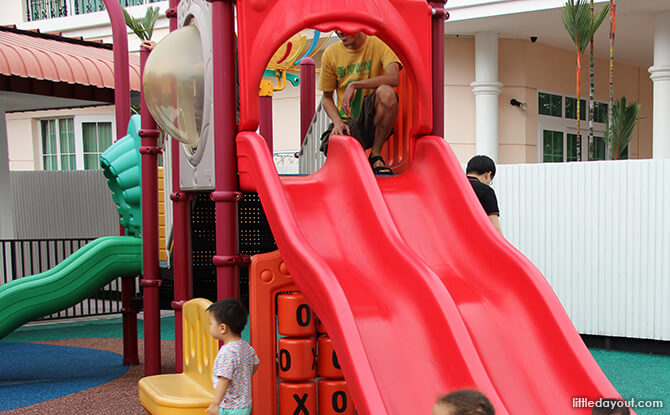
Brighton Montessori’s Frankel Avenue location has a nice little garden at the front, with a playground and an open space for little cars and scooters to zip around.
Outdoor activities are good for kids – especially in a generation where electronic devices like TVs, iPads and other touch goodies are rife – some time in sun and physical activity gets the blood pumping.
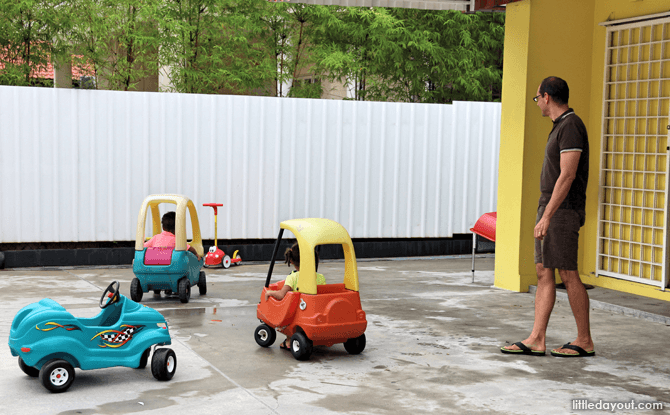
The kids are free to play at the fenced playground area, or venture to the open space to play with the toy vehicles.
Snack Time
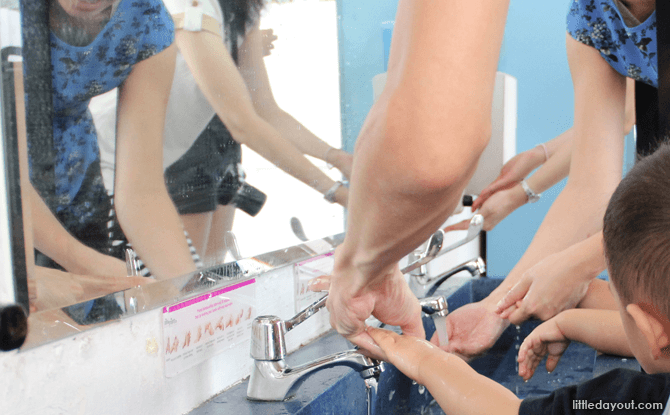
Soon, to the kids’ delight, it was snack time.
The wash basins are also child-sized, and our tot was all too happy to wash his own hands easily.
This is also part of Montessori’s principles, where a child learns practical life skills, independence and – especially during mealtimes – respect for others.
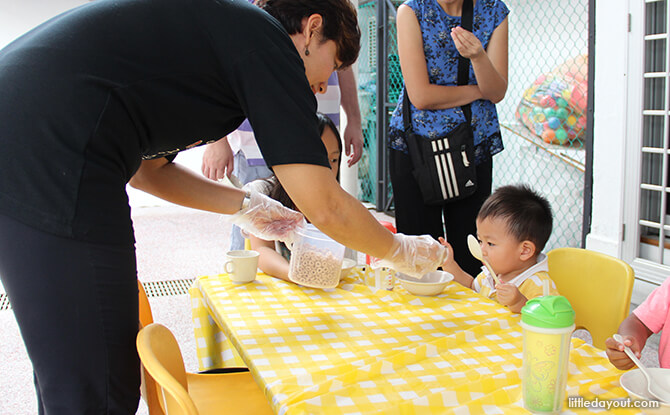
Snacks involved Cheerios and raisins.
The friendly but firm teachers did a good job in reminding the little tykes to refuse any unwanted food politely. Instead of saying, “Don’t want!” the child was gently reminded to say, “No, thank you.”
Music, Movement and Goodbye
Our little one had a bit of a melt-down when everyone stopped eating and headed back to the room for singing – mainly because he was still eating and had to stop, too.
The teacher handled that pretty well by not fussing over him; and they were not flustered by his crying either.
In fact, the teacher acknowledged his feelings. “Oh, little P is just upset that he did not get to finish his snacks. That’s okay. We shall sing some fun songs now!”
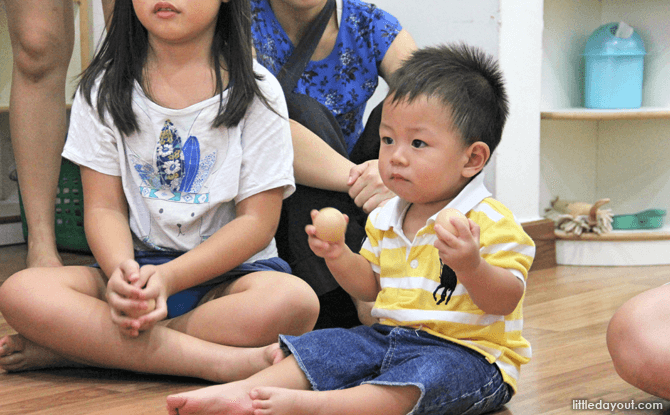
Well, he soon forgot his woes and joined in the Hokey Pokey dance. Everyone had an egg rattle to play with during the songs.
After a few high-energy activity songs, we moved on to wind-down songs, and eventually, a gentle goodbye song with everyone’s names in it. Just like the way we started the session.
Every parent was given a goodie bag including vouchers for school fees and information brochures.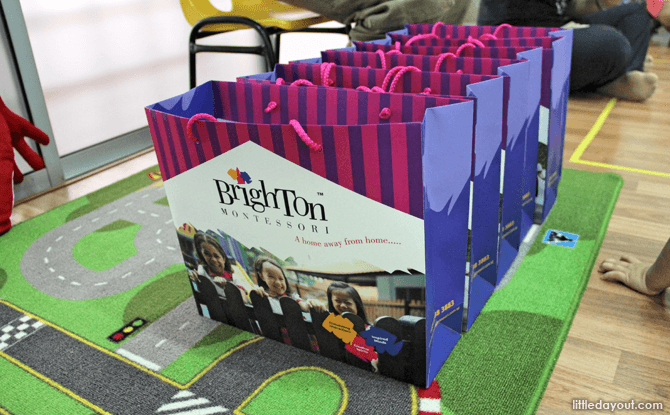
Details of Brighton Montessori’s free trial are as follows…
Date: Any Saturday between 25 April to 30 May 2015
Time: 10.00 am to 11.30 am
Open to: Ages 18 months to 3 years
Venue: Brighton Montessori at 125 Frankel Avenue, Singapore 458235
RSVP at: 6588 3883
With only 10 slots available per session on a first-come, first-served basis.
This feature is brought to you in collaboration with Brighton Montessori.




